|
Horváth Márk – Lovász Ádám
Absentology Műhely Abstract
The theme of our essay is the digital architecture of memory, and the aesthetic implications of memory-digitalization. Information storage technologies and other methods of archivality are exteriorizing memory to an unprecedented degree, contributing to the progressive emergence of an inhuman abstractive agglomeration that has certain identifiable aesthetic features. In our view, the dispersion of social agency throughout networks has resulted in the complexification of social and technological processes. As a consequence, the space of aesthetics has also changed in fundamental ways.
According to Wendy Hui Kyong Chun, new media represent a kind of near-infinite replaceability that threatens to dislocate memory from lived experience. Audiovisual technologies do not expand visibility but rather blur it.[1] Instead of natural seeing, what we have in algorithmic visibility is exteriorized, programmed and outsourced vision. In new media, we find a multitude of recursive processes. As Brian Massumi notes, social and ontological causalities, far from being one-sided, are, rather, reversible and affect one another through „intensities and incorporeal movements.”[2] An aesthetics of archivality represents a method of accessing a posthuman future, wherein human teleologies are exposed as broken, derailed and empty. The trauma of our own absence suggests the possibility that we never were present to begin with.[3] [1] Chun, Wendy Hui Kyong (2013) Programmed Visions (Cambrdige, Mass.: MIT Press) [2] Massumi, Brian (2002) Parables for the Virtual. Movement, Affect, Sensation (Durham és London: Duke University Press) 203. [3] Berger, James (1999) After the End. Representations of Post-Apocalypse (Minneapolis: University of Minnesota Press)
loading...
1. Dark matter and code-trauma
The threatening depth of digitality thrusts into social networks through an aesthetic operativity predicated upon the lack of access. Image-streams necessitate a hybrid visual aesthetics, an expanded aesthetic science that is capable of grasping, if only in a negative sense, the grammatical subsystems that serve as the infrastructure of binary-based reality-reducing algorithms. Binary code reduces material and corporeal multiplicity to the one-dimensional subreality of simulation. Even language is not as it used to be: in contemporary social reality, all we find are the fragments of linguistic wholeness. It is as if all our lives were permeated by a new mother-tongue, a grammatology composed of hardware and software sub-components, an inhuman structure that equates deep exchanges with superficial conferences and sexual adventures, feeding upon each and every form of communication. To the code, it matters not whether we are speaking with our lover or our manager. Our new mother-tongue is digital language, a function of the self-functioning machinery of archivation. Complex coding-and decoding operations are required so that we may connect with alterities-without-otherness. Behind the cloud, there could very well be no God, not even a hidden god, a Deo abscondito such as that proposed by Nicholas of Cusa. Source codes, batch files and ransomwares command our beleaguered attention. In the manner of vampires, these codes parasitise users. Katherine N. Hayles differentiates two levels of code: so-called „natural language-based codes” that are accessible to human actants, and codes that are characterized by a lack of access.[4]
With the help of Hayle’s distinction, we may analyze the example of ransomware, identifying access with the user’s fear, and the lack of access with the documents foreclosed to the user by such malicious programs. Ransomware is a software that blocks flows of information, archiving and encrypting files. Only with countermeasures and/or sending Bitcoins to untraceable bank accounts may we hope to regain our lost affordances. Ransomware traps are traumatic experiences that make of us unwilling hostages. Foreign, nameless forces take our computers hostage, and thereby our own sense of identity and coherence is endangered. As Alexander Galloway has noted, computer hardware and software alike may be viewed as constituting different kinds of „black boxes.”[5] Indeed, API-s function in a manner analogous to black boxes.[6] The term „black box” originates from the early 1940s, when important technological assets were smuggled out from the United Kingdom to the United States inside a dark metal box, an originary act of militarily-actuated technological transferrence.[7] Information storage is inherently „black box-like” in nature, and this characteristic cannot but affect the subjectivities exposed to its operativity.[8] Returning to the example of ransomware, codes and informational black boxes represent what is essentially a military, tactical logistics. As Paul Virilio writes, social reality, overcoded by cybernetic technologies, is tending towards the disappearance of any and all dimensionality; all that remains is the „lost dimension”, „an informational node, a pixel, that allows the immediate transmission of data.”[9] In a matter of moments, the openness of data transubstantiates itself into closure, and our panicked clicks fail to avert a disaster of monumental proportions. Cybernetic spatiality, the space of virtual culture, is a form of space wherein „knowledge is literally vacummed from all the orifices of the body, society and economy, downloaded into data storage banks, and then sampled and resampled across the liquid media-net.”[10] Not only are the contours of the body blurred by cybernetic operativity, but all informational forms lose their boundaries. Although the linguistics of digital codes may seem, at first glance, direct and accomodating, the ever increasing complexity of networks, translated by program languages and source codes, is, in its actuality, contributing to the construction of a post-anthropocentric symbolic system, founded upon foreclosure and absence, while, at its outer, accessible edges, emphasizing total transparency. [11] Hayles differentiates three levels of code, so to speak. The first level is the „openness” of code, the second the sovereignty of algorithms, and, third, the anti-vitalist, subversive bursting forth of viruses.[12] Invisible forces manipulate languages in cyberspace, forming, mutating and replanning entities, enclosing information within binary darkness. Intentionality is incapable of controlling cyberspace and, for that matter, any other communicational field. The inorganic logic of codes, its perverse anti-aesthetics, is the operativity that beclouds our own usages of language. Dan Hill utilizes a notion of theoretical physics, „dark matter”, transforming it into an aesthetic and programming concept. [13] In Hill’s view, dark matter may serve as a useful metaphor to name the uncoded substrate that tends to remain hidden from view in the process of coding.[14] The „black box” logic of digital codes is analogous to dark matter, which only manifests itself during the course of hostage dramas or social traumas. Collapsed virtuality heightens awareness of hidden presences, present absences saturating codings. According to Hill, programmers must keep note of the presence of dark matter, as the latter is an important aspect of all productivity.[15] Everything is permeated by dark matter; even the process of original installation is always affected by its vacuous presence.[16]
[4] Hayles, Katherine N. (2013) “Traumas of Code”, In: Kroker, Arthur és Kroker, Marlouise (eds. 2013) Critical Digital Studies Reader (Toronto: University of Toronto Press) 39.
[5] Galloway, Alexander (2013) Black Box, Black Bloc”, In: Kroker, Arthur and Kroker, Marlouise (eds. 2013) Critical Digital Studies Reader (Toronto: University of Toronto Press), 218-227 [6] Galloway 2013: 221. [7] Uo. [8] Galloway 2013: 222. [9] Virilio, Paul (2012) Lost Dimension (Los Angeles: semiotext(e)) 147. [10] Kroker, Arthur (1994) Data Trash. The Theory of the Virtual Class (New York: St. Martin’s Griffin) 24. [11] Hayles 2013: 39. [12] Hayles 2013: 44. [13] Hill, Dan (2014) Dark Matter and Trojan Horses. A Strategic Design Vocabulary (Moscow: Strelka Press) [14] Hill 2014: 82-83. [15] Hill 2014: 84. [16] ibid.
loading...
2. Saturation in digital mapping
Digital codes and representational technologies freeze actants and achor them to screens, locking movement into situations, while promising „direct manipulation.” Ben Sneiderman emphasizes that “certain interactive systems generate glowing enthusiasm among users — in marked contrast with the more common reaction of grudging acceptance or outright hostility.”[17] As Chun writes, commenting on Sneiderman’s piece, direct manipulation gives the illusion of control to the user, resulting in „a feeling of mastery.”[18] One concrete example mentioned by Chun is Google Earth. When using the program, we are offered „a god’s eye view” that „allows us to zoom in on any location, to fly from place to place, and to even control the amount of sunshine in any satellite photo. Google Earth, however, hardly represents the world as it is, but rather a more perfectly spherical one in which it hardly ever rains.”[19] The Earth represented to us by Google Earth and other such software is a profoundly arid, flattened and deserted planet, a space free of events and contingencies. Within this ideal sphere, there can be no change, no movement. Thus, digital mapping gives us a false sense of security that fails to correspond with the very real degradation of Earth. Google Earth, as opposed to life on the real thing, obfuscates the fact that we can never occupy any divine viewpoint. There is no „god’s eye view” that is capable of synthesizing all perspectives within itself. While digitality fills up with errors, mistakes and viruses, it attempts to integrate various homely features of everyday reality into its interstices, disguising its true nature with such add-ons. Yet, as Arthur Kroker highlights, „flesh cannot sustain virtuality.”[20] Technology blocks, destroys, obliterates and disassembles organic sensory processes, and, through such deconstructive work, seeks to „make the world safe for virtuality.”[21] Simply put, in the Anthropocene, „the flesh is losing.”[22] Earth is being replaced by Google Earth. Chun writes further on that „the digital (...) is the enduring ephermal.”[23] Although the past is seemingly preserved by digital archiving, in reality this preservation is a kind of degradation, for it is conducted solely through an „ahistorical (or memoryless) functioning.”[24] Chun sees digital mapping as a process of corruption and degradation, but also sees it as a creative opportunity, a way of introducing new hybrids into the world and a chance for us to rethink hybridity. Mapping is therefore not a merely representational method, but rather, as we hope to show, a strange, recombinatory world-constituting process.
We hope to make our point through analyzing several examples of errors in digital maps. The presence of data errors uncovers the recombinatory possibilities latent within code systems. The „god’s eye view” mentioned by Chun is obviated by archiving mistakes, specifically, mapping errors. Following Peter Schwenger, we can say that "the system at its extreme reveals itself to be arbitrary, unreal.[25] At its extremity, mapping becomes a veritable see of error and mischief.
During archiving, certain bodily features, corporeal elements become unnaturally over-and underscaled. Above we can see such an example of slippage, captured (created?) by Google Earth. While in reality the businessman’s arm fits with his body almost seamlessly in real life, in virtual reality the arms becomes grossly, unnervingly large. The arm only appeals to us, as the other participants in this scene are external, oblivious to the otherness of our own, pre-programmed vision. Although the lived, „real” reality of the image is a boring, everyday one, the Google camera has, through phenomenal reduction, created a new scene, a mutation, making the invisible mutant visible and accessible. After uploading, things lose their lived relation to multiplicity, but gain new emphasis in a spectral, strange recontextualization. One could say that in spite of the fact that the aura of uniqueness is lost, this loss allows for the reconstruction of a living-dead, spectral and, in the final instance, virtual aura. Nostalgic memory would, in this context, be a cloning machine that reproduces errant visibility. In Schwenger's view, melancholic memory perpetuates the present, resulting in an extratemporality that is "like an object, en-soi, self-sufficient and outside of time and the world."[26] Perpetuated visibility means, ironically, that things reject permanent immobility, as well as the following of commands. Things are "animated by a restless life beyond the grave of categories."[27] The extended arm that carries the briefcase is therefore an instance of ecstatic archival disquiet.
The next image was purportedly obtained from Apple Maps, and shows a seemingly post-apocalyptic digital Picadilly Square. Digitalized emptiness makes space and existents within space vacuous, debased. Human actants have already been removed from this petrified image, devoid of content. The flesh has disappeared, the human has been outsourced into a reality beyond representation, at least in the inhuman world of Apple Maps. Solely melted, destabilized architectures remain, shadowy remnants of what was formerly London City. Representation, after a while, degrades reality until the latter is simplified into oblivion. Authenticity is always an act, a gesture of appresentational operativity. Emptiness is the sole organ of genuineness. Spectral particularity, through stimulative simulation, breeds ever more spectral outpourings of emptiness. By consequence, phenomena are impoverished, rendered naked, deprived of content. The roads, in Apple’s rendition of Picadilly Square, seem to turn upward, cracking. Infrastructure, in hyperreality, comes undone, due to some infernal saturation. It would seem that digitality, code trauma, is bursting forth, to the detriment of any other intentionality. Digital codes irradiate the grey concrete, and space is deformed by the frenzied mayhem of recombinant hybrid entities.
Our final example would be the hyperreal effects of digital mapping. In 2010, an area of Costa Rica was accidentally „gifted” by Google Earth to Nicaragua, resulting in a conflict of near-continental proportions.[28] Using the map as a convenient excuse, Nicaraguan forces invaded the disputed area. Archivational processes function in a near-automatic manner, and „do not obey any human intentionality.”[29] Hiding behind their anonymity, mapping apparatuses pit human actants against one another, bringing entire nations to the brink of war. Digital cataclysms can therefore translate themselves at any moment into real catastrophes, military conflicts. Vilém Flusser is correct when he writes that technologies of representation „program the viewer to act magically and functionally and, by extension, automatically.”[30] Magically, it is true, but invisibly, latent forces control human actants, integrating them into totalizing, inorganic machinic assemblages.
Human intentionality becomes, in this context, similar to a rotting corpse. It is no longer alive, or at least, no longer sovereign, yet still exerts a kind of zombie-operativity, reacting far too late to digital acceleration and totalization. Corporeality is a connection that brings the spectacle before us. Of the dead body, Schwenger writes that it is "in a sense already defiled by death, a mere piece of ungainly waste."[31] The sight of the cadaver is unnerving for us, because it points toward the primordial incoherence of its own abjection. [32] The blurring of the border between Costa Rica and Nicaragua is also an ambiguous manifestation of the dislocation of human/animal and real/hyperreal boundaries. Limits are replaced by intensifying replaceability. We are becoming ghosts in our own lifeworlds, cadavers that, in spite of their movements, are rendered immobile and incapable of arriving at any destination.
[17] Sneiderman, Ben (2003) “Direct Manipulation: A Step Beyond Programming Languages”, In: Wardrip-Fruin, Noah (ed. 2003) The New Media Reader (Cambridge, Mass.: MIT Press) 486.
[18] Chun 2013: 63. [19] Chun 2013: 62. [20] Kroker 1994: 91. [21] ibid. [22] Kroker 1994: 86. [23] Chun 2013: 95. [24] ibid. [25] Schwenger, Peter (2006) The Tears of Things. Melancholy and Physical Objects (Minneapolis: University of Minnesota Press) 119. [26] Schwenger 2006: 92. [27] Schwenger 2006: 118. [28] https://www.theguardian.com/technology/2010/nov/15/google-map-dispute-nicaragua [29] Flusser, Vilem (2014) Towards a Philosophy of Photography (London: Reaktion Books) 73. [30] Flusser 2014: 74. [31] Schwenger 2006: 158. [32] ibid. 3. Viruses, worms and Corrupted Blood
Digital culture is a non-representative, algorithmic flow. In this section of our essay, we emphasize the marginality of human agency in relation to viral reproduction, and the centrality of viral-and worm-operativities in post-anthrpocentric networks.
Through the instrumentalization of certain materialities (screens, cursors, remote controls, mouses), digitality connects with human agents and their avatars, recoding the former into virtual-reality playgrounds. Yet the human element as such is merely one substrate among many, and is becoming ever more peripheral. In Jussi Parikka’s view, viruses are characterized by hybridity, synthesizing a number of different materialities, corporealities and incorporeal transformations.[33] Cybernetic operativity necessitates continous recoding and relearning, resulting in the degradation of inelastic agents unable to cope with the strain of network participation. Relearning and the compulsion to recode breeds disaffection, hatred of both life and one’s own lifeworld, reducing the odds of survival. Indeed, it is the more contented actants that stand any chance at all of long-term species existence.[34] Actants ground to dust are swiftly replaced by viral agents. As Parikka notes, „a virus may be understood as a calculational process at the material level of computer circuits, but when this accident (event) is called 'malicious software' it connects to a whole incorporeal sphere of morals, crimes, criminals, laws and judgements."[35] As opposed to modern methods of archiving that were based primarily upon hearing and visibility, viruses subvert existing human networks through unperceptibility and inaccessibility. Their reality carries within itself horrific contents, a fundamental inability to communicate. This inability is characteristic of horror in general, for horror is, to a large extent, a meeting with „the strangeness of a world without us.”[36] Biologists have had to face the difficulty of identifying microscopic pathogenic agents from the 19th century onwards.[37] When the „order of things becomes truly unhinkable", the abyss opens.[38] In David Peak’s view, the abyss constitutes the „core of existence”, its most essential base.[39] Similarly, viruses may be interpreted as the deepest core of information, whose malignant effects emanate not from a space beyond, outside of information, but from within information itself. Parikka in his essay on viruses emphasizes that the virus as expression – through its invisibility and unpossessibility – was used in a variety of areas unamenable to scientific investigation. [40] Brian Massumi, writing of virtuality, highlights that „the virtual is non-quantifiable. Quasi causality cxpresses a real, material reserve of unpredictable potential.”[41] The virtual multiplicity of viruses cannot be subordinated to any one signification or visualization. With their self-organizing calculational processes, viral agents produce sick bodies, infected corporealities. Precisely because of their unnameability, ineffability, an unknowable abyss opens and the identity of software is put in doubt question.[42] Even „normal”, calculable software is demonic/daemonic, because in the background, hard to locate demons make possible the executability of even legitimate software. According to Chun, even non-pathological networks are inhabited by „invisible, orphan processes”, and may be called „daemonic media.”[43]
loading...
The first famous computer virus was „Brain”, infecting a number of IBM computers in 1986. Its name is telling, for it concerns the primary „organ” of cognitive capitalism. Viruses attack not only organs, but network infrastructures. Connectivity is transformed, as a consequence of viral invasion, disconnectivity, the impossibility of any further (non-pathological) connection. Disconnectivity is injected into logocentric network cultures. The virus even produces its own Dada-poem: “BRAIN COMPUTER SERVICES 730 NIZAM BLOCK ALLAMA IQBAL TOWN LAHORE-PAKISTAN PHONE: 430791.443248. 280530. Beware of this VIRUS.... Contact us for vaccination...” The virus, as opposed to non-pathogenic agents, is capable of maximum self-reproduction, multiplying darkness until light is subsumed. Global capitalism gleans upon the virtual horizon.
Internalities, torn asunder, make visible „spasmodic passivity”, the foreclosure of flesh.[44] The brain of global cognitive capitalism comes to be consumed by a virus from Pakistan. It is of note that for Massumi, emotion in general is none other than „a contamination of empirical space by affect”, an affectivity born of anonymous virtualized corporeality, or hyperreal incorporeal intensities.[45] Virality spreads across nerve pathways, producing ecstatic emotions and self-affections. Emotion may be considered a perverse infection of the brain. Real biological entities and metaphorical information codes consume actants. Naegalaria fowleri, a brain-eating bacterium discovered in 1965, is as capable of eradicating logocentric operativity as viruses are of disrupting online networks. Once it reaches the brain, the microbes become amoebacysts, then trophozoites. Similarly to computer viruses, they are invisible and, once inside the brain, all but inaccessible, and signs of infection only arise later. For the most part, Naegalaria fowleri may be found is tropical areas of the globe. The „Brain” virus also originated from a relatively hot area of Earth (Pakistan). An ontological affinity may be uncovered between virality and tropicality. „Vision is always infected” – so Massumi would have it.[46] Surfaces are chiasmatically intertwined, and purity is but an exception to the rule of uncleanliness.[47] For this very reason, virtuality is all but inseparable from multiplicity.[48] Viral proliferation always appears in the form of multiplicity. We cannot know precisely from whence brain-eating amoeba arrived into the world. What is sure is that we must search for its origin in one or another swampland. The objects of vision are, for Massumi, „hallucinations”, spectral entities, ghosts.[49] It is a peculiar characteristic of UNIX-demons that – with the help of minor modifications – newer versions of these minions may be manufactured.[50] In Chun’s view the source of daemonic spectrality may be found in „real time processes.”[51] Daemonology’s source is the permanence of real-time data feeds, parasitizing the real so as to construct an infinitely self-referential hyperreality. When networks oversecuritize themselves, they become prone to systematic chaos and breakdown.[52] A primary characteristic of archiving is discontinuity, the fragmentation of memory.[53] In spite of this fragmentation, the reduction of information into discrete entities does not ensure a proper defense against rogue entities and subversive infectious movements. The Logos is foreclosed once neural circuits are disconnected. In other words, visual force morphs into the impossibility of representation, a state of marginality and weakness.[54] Every temporality that concerns „a body-without-image” is inherently foreclosed, precluded.[55]
Without representation, the body remains enclosed within spasmatic passivity, sinking into passionate impotentiality.[56] The brain infected with trophozoites, emerging from cysts buried among the tissues, may be interpreted as a form of inoperative corporeality. Code languages, once they fall prey to viral subversion, become infinitely incoherent incorporealities, deconstructed textualities. Every form of textuality is, of necessity, in some way corporeal, for even incorporeality is, even if negatively, a manifestation of corporeal nature. The ethereality of hypertextual spectrality must be traced back to fleshy reality. We ourselves are affected by the corruption of code languages, we ourselves are debased, reduced in significance, when our files are locked away from us. We ourselves are the wounded ones, the victimes of errant codes. Although the characters of zombie-films routinely smear themselves with the innards of zimbies, to prevent laceration and consumption by these errant, ill entities, they do not cease, for all their striving, to be potential victims. Our infected social reality produces victimhood in unprecedented proportions. The self-replication of viruses entails the debasement of human actants to the level of potential victims, always open to attack, occupation, subsumption and reformulation.
Networked social reality is always fraught with danger. The 1988 film, Brain Damage, plays on such fears of infection and parasitization. Worms are subversive, diabolical agents in the scheme of this film, manipulating human agents in unpredictable and surprising ways. In one particularly gruesome scene, the main character attempts to pull the worm out of his skull. Bits and pieces of his brain are also removed in the process, for the worm has already become part of his lifeworld, his body. The seconds of removal seem to take forever; we are enclosed within a nightmarish temporality; as distinct from the accelerated temporality of connected life, attempts at emancipation seem to lengthen temporality in frightful and painful ways. We ourselves cannot free ourselves of the network, for we live in a chiasmatic relationship with its worms and viruses.
Externality and internality are entwined in a seemingly eternal affinity. Even in its deepest layers, flesh is chiasm. In Kroker’s view, the Internet is the „garbage-dump” of the body, a place where „the flesh goes, so it may be virtualized.”[57] Foreclosure exerts a seductive force upon the bodies integrated into its circuits, for it promises that the fleshlike remainder” may be disposed of.[58] In the aforementioned scene of Brain Damage, the entirety of the parasitised human body becomes one large, fleshlike remainder, collapsing from the seat of the Logos downwards. Endless connectivity becomes a horrendous ordeal, that can only be confronted by the affected man through inarticulate screams. His brain is infected with an endless worm. Paradoxically, the scene also highlights that permanent connectivity tends to cut off memory from experience, making the latter almost completely incoherent.
However, James Berger proposes that memory is always already characterized by incoherence.[59] This is especially true in the case of traumatic memory. As the survivors are always reminded of death’s inevitability, they become, living as they do in the shadow of death, living corpses. To bear witness is to live as if one were dead. [60] Instead of communication, we hear incoherent screams, whose animality is intended, no doubt, to shock us out of our complacency. The character attempts to remove the worm, alas not altogether in vain. Only with the sacrifice of the flesh may emancipation be achieved. In a final, self-mutilating gesture, the man frees himself of the worm, but at the expense of losing his ear. The ear falls to the ground, and the camera (a substitute, no doubt, for out own bearing-witness) focuses on this abject, newly functionless organ. Yet we cannot remove ourselves from trauma, as if there were some safe distance from our own wounds, for "trauma is what returns, and it returns as symptom, which is itself a reenactment of trauma. The existence of the symptom, like the present of the ghost, is a sign that the trauma is still active, still has power to wound and disrupt."[61] The fallen ear remains, provoking our vision to look, a traumatic sign of the ambiguity of emancipation.
In another scene of Brain Damage, the same man offers his own cerebreal tissues to the worm, whose multifunctional mouth organ feasts upon the sacrifice. During the sacrificial ceremony, electronic impulses are seen, which temporarily incapacitate the „victim”/Host’s nervous system.[62] It is of importance that during the process of integration into rule-based systems, „change, variation, is captured and contained.”[63] Digitality, reduction into binary code-systems, reduces the latitude of affected agents, even the space of thought, as the parasitised brain attests.
In conclusion, we would seek to demonstrate the importance of corporeal infestation with another empirical example. In 2005 World of Warcraft, an Internet social game, was infected with an epidemic.[64] With virtuality, new opportunities for infection and experimentation have emerged. The 2005 epidemic, known as „Corrupted Blood”, was a hybrid epidemic, straddling the boundary between „reality” and „simulation”, connecting the virtual and the multiple in a relationship of reversibility. As Lofgren and Fefferman, epidemologists, emphasize, „human agent simulations, where the subjects are virtual but have their actions controlled by human beings interacting with each other, may potentially bridge the gap between real-world epidemiological studies and large-scale computer simulations.”[64] The case highlights that virtuality and reality are, to a great extent, reversible categories. Digital aesthetics must somehow come to terms with what Berger summarizes in the following manner: "all texts transmit their wounds - this is something in the nature of texts, and wounds - and in speaking about one, you speak abou all."[66] Textalities, in World of Warcraft, not only transmitted wounds, but also infected, festering, rotten bodily remains, opening up newer and ever more intensive nodes of infection.
„Corrupted Blood” itself commenced from a specific place within the game, „Zul’Gurub”, which only the most experienced gamers could access.[67] In spite of the fact that these avatars did not succumb to the virus, once the „victorious” avatars returned to the large urban conglomerations, unwittingly transmitting the disease, the outbreak began in earnest.[68] It is especially interesting that the majority of avatars received the fatal infection from their own pets.[69] Infected avatars disintegrated, with only disjoined bones remaining, and traumatized the streets of cities long after they themselves had died. As the game contained certain avatars that could not, under any circumstances be killed, the epidemic could not be stopped, for these latter avatars carried the virus with them. The cities became „death traps.”[70] The epidemologists – who regard the „Corrupted Blood incident” as a real epidemic in all but name – also state that the altruism of certain users actually served to lengthen the timespan of the epidemic, rather than attenuating it, for they supplied „clean blood” to other dying avatars, lengthening their ordeal and contributing to newer infections.[71] The users, because of their emotional investments in the game, could be said to react almost realistically to in-game events. As we may see patterns of interaction between virutal viruses and real, corporeal players, one could say that the users themselves were, in a certain way, infected, saturated, impregnated with „Corrupted Blood.” Corruption is both cause and effect. It disintegrates and prises open bodily cavities, returning organic entities to inorganic disincarnational abstraction.
The streets emptied by „Corrupted Blood” may be compared to a white canvas that has been painted black, which points "no to a past and vanished existence but to a still-to-be-realized future one."[72] Our futureality may be said to have already ceased, for the „Corrupted Blood incident” is a traumatic message from the future to an overly populous homo sapiens, a retroactive memory, an externalized withoutness. Schwenger is correct when he emphasizes "what remains after annihilation is tabula rasa, white as the blank page."[73] The virus only ended once Activision Blizzard, the owner of the game, refreshed the servers. As the epidemologists note with no small irony, refreshing the servers is „an option that remains unavailable to public-health officials.”[74] All the objects of the world are "always implicated with a metaphysical nonexistence, an unknowableness that is - a least for the perceiving eye - a kind of death."[75] Without effective quarantine actions (the avatars, because of the great spatial mobility, could not be restricted to one section of the in-game landscape), the virus could only be eliminated through a radical resetting of the computers, a refereshment that obviated the previous events. The story did not quite end here, however. The authors of the above-quoted study maintain that World of Warcraft and other such games afford an ideal opportunity for epidemological observations, as a virtual simulation lacks the ethical dilemmas that accompany real life experimentation.[76] Merely three years after the outbreak, Activision Blizzard deliberately introduced, to the great chagrin of gamers, a new virus into the system, this time with the express intent of observing in-game behavior.[77] The illness transformed infected avatars into „undead zombies.” Several hundred thousand gamers were infected by the time the company decided to heed protests and abandon the experiment.[78] In this latter case, the infection was „curable”, albeit only by „suicide” and „resurrection.”
[33] Parikka, Jussi (2009): “Archives of Software. Malicious code and the aesthesis of media accidents” In: Parikka, Jussi és Sampson, Tony D. (szerk.) (2009) The Spam Book: On Viruses, Porn, and Other Anomalies from the Dark Side of Digital Culture (New York: Hamptom Press) 107.
[34] Gao Y, Edelman S (2016) „Between Pleasure and Contentment: Evolutionary Dynamics of Some Possible Parameters of Happiness.” PLoS ONE 11(5): e0153193. doi:10.1371/journal.pone.0153193 [35] Parikka 2009: 107. [36] Peak, David (2014) The Spectacle of the Void (Schism Press) 57. [37] Parikka 2009: 109. [38] Peak 2014: 57. [39] Peak 2014: 58. [40] Parikka 2009: 109. [41] Massumi, Brian (2002): Parables for the Virtual. Movement, Affect, Sensation (Durham and London: Duke University Press) 226. [42] Parikka 2009: 111. [43] Chun 2013: 87 [44] Massumi 2002: 61. [45] ibid. [46] Massumi 2002: 155. [47 ibid. [48] Massumi 2002: 154. [49] Massumi 2002: 155. [50] Chun 2013: 88. [51] Chun 2013: 89. [52] Parikka 2009: 115. [53] Chun 2013: 212 [54] Massumi 2002: 60. [55] ibid. [56] Massumi 2002: 60-61 [57] Kroker 1994: 104. [58] Kroker 1994: 105. [59] Berger, James (1999) After the End. Representations of Post-Apocalypse (Minneapolis: University of Minnesota Press) 73. [60] Berger 1999: 72. [61] Berger 1999: 79. [62] https://www.youtube.com/watch?v=6oOgdtvNoho [63] Massumi 2002: 79. [64] http://www.theregister.co.uk/2005/09/21/wow_virtual_plague/ [65] Lofgren, Eric T., and Nina H. Fefferman. “The untapped potential of virtual game worlds to shed light on real world epidemics.” The Lancet infectious diseases 7.9 (2007): 627. [66] Berger 1999: 122 [67] Lofgren, Eric T. – Nina H. Fefferman 2007: 625. [68] Uo. [69] Uo. [70] Lofgren, Eric T. – Nina H. Fefferman 2007: 626. [71] Lofgren, Eric T. – Nina H. Fefferman 2007: 628. [72] Schwenger 2006: 171. [73] Schwenger 2006: 170. [74] Lofgren, Eric T. – Nina H. Fefferman 2007: 627. [75] Schwenger 2006: 174. [76] Lofgren, Eric T. – Nina H. Fefferman 2007: 628. [77] http://www.webcitation.org/5tbD2NeVO [78] Uo.
Bibliography
Berger, James (1999) After the End. Representations of Post-Apocalypse (Minneapolis: University of Minnesota Press) Chun, Wendy Hui Kyong (2013) Programmed Visions. Software and Memory (Cambrdige, Mass.: MIT Press) GAO Y, EDELMAN S (2016) „Between Pleasure and Contentment: Evolutionary Dynamics of Some Possible Parameters of Happiness.” PLoS ONE 11(5): e0153193. doi:10.1371/journal.pone.0153193 Flusser, Vilem (2014) Towards a Philosophy of Photography (London: Reaktion Books) Galloway, Alexander (2013) “Black Box, Black Bloc”, In: Kroker, Arthur és Kroker, Marlouise (ed.) Critical Digital Studies Reader (Toronto: University of Toronto Press), 218-227. Hayles, Katherine N. (2013) “Traumas of Code”, In: Kroker, Arthur és Kroker, Marlouise (ed.) Critical Digital Studies Reader (Toronto: University of Toronto Press), 39-59. Hill, Dan (2014) Dark Matter and Trojan Horses. A Strategic Design Vocabulary (Moscow: Strelka Press) Kroker, Arthur (2004) The Will to Technology and the Culture of Nihilism: Heidegger, Marx, Nietzsche (Toronto: University of Toronto Press) Kroker, Arthur (1994) Data Trash. The Theory of the Virtual Class (New York: St. Martin’s Griffin) Lofgren, Eric T., and Nina H. Fefferman “The untapped potential of virtual game worlds to shed light on real world epidemics.” The Lancet infectious diseases 7.9 (2007): 625-629. Massumi, Brian (2002): Parables for the Virtual. Movement, Affect, Sensation (Durham and London: Duke University Press) Parikka, Jussi és Sampson, Tony D. (ed.) (2009) The Spam Book: On Viruses, Porn, and Other Anomalies from the Dark Side of Digital Culture (New York: Hamptom Press) Peak, David (2014) The Spectacle of the Void (Schism Press) Phillips, Dougal (2009) “Can Desire Go On Without A Body?”, In: Parikka, Jussi – Sampson, Tony D. (ed. 2009) The Spam Book: On Viruses, Porn, and Other Anomalies from the Dark Side of Digital Culture (New York: The Hampton Press), 195-229. Schwenger, Peter (2006) The Tears of Things. Melancholy and Physical Objects (Minneapolis: University of Minnesota Press) Sneiderman, Ben (2003) “Direct Manipulation: A Step Beyond Programming Languages”, In: Wardrip-Fruin, Noah (ed. 2003) The New Media Reader (Cambridge, Mass.: MIT Press) 485-499. Virilio, Paul (2012) Lost Dimension (Los Angeles: semiotext(e))
loading...
0 Comments
Leave a Reply. |
Steven Craig Hickman - The Intelligence of Capital: The Collapse of Politics in Contemporary Society
Steven Craig Hickman - Hyperstition: Technorevisionism – Influencing, Modifying and Updating Reality
Archives
April 2020
|
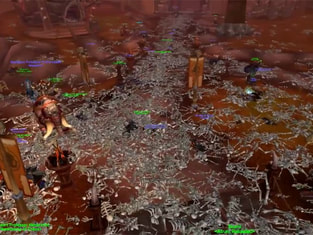

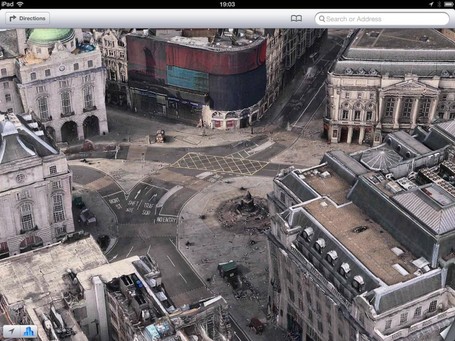

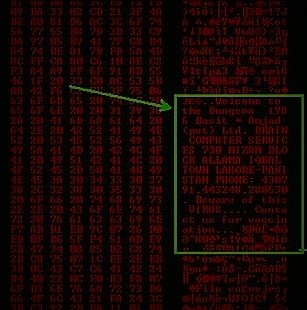

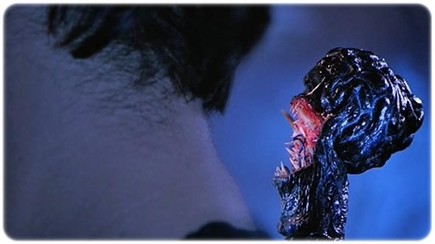
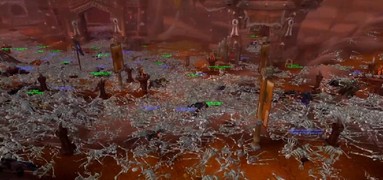
 RSS Feed
RSS Feed
